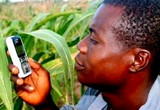
Reported cases of failed technology-related development projects mean that governments and other roleplayers implementing ICT initiatives should re-think their strategies.
Perhaps you’ve seen the meme image of the thatched roof mud hut almost buckling under the weight of a new satellite dish, usually appended with some pithy caption like ‘Priorities Fail’. It’s a funny image, but it’s also an increasingly visible paradox in developing countries looking to propel their economies forward and alleviate social problems with high tech accessories.
The development community and national governments alike have enthusiastically embraced information communication technologies (ICTs) to improve conditions in isolated areas suffering from privation. Internet access brings new hope for under serviced rural areas, but in a majority of cases hope is the end of the line.
The World Bank alone reported a 70 percent failure rate of their ICT for development projects; other organisations admit similarly high estimates. Despite these sobering statistics that should breed caution and give a critical eye to ICT for development initiatives, many government officials and communities maintain a quixotic perception that Internet access alone is a cost-effective cure-all for rural struggles.
One high-profile initiative in South Africa’s Eastern Cape offers an intimate look into the converging worlds of technology and rural development, and the high expectations placed on such alliances.
Scattered clusters of humble houses make up the Dwesa community, where the local government just recently secured electricity for essential facilities (for example, schools, health clinics, and some houses). Travelers through the area are advised to make the trip only if equipped with four-wheel drive, and to avoid the roads at night due to the excessive amount of wandering cattle.
At first glance the community seems as marginalised as they come, but continue to Ngwane School and you will confront the first visible sign that distinguishes this community from the rest.
Reaching high above the various crops and traditional Xhosa dwellings stands a behemoth 12-meter tower, equipped with a mobile WiMax radio providing 17 schools with high-speed wireless Internet.
Thanks to a community engagement initiative by Rhodes University and the University of Fort Hare known as the Siyakhula Living Lab (SLL), companies like Telkom, Saab Grintek Technologies, and other international NGOs have banded together to equip Dwesa with computers, unrestricted internet access, and computer literacy training.
By: Michelle E. Leung
Michelle E. Leung is a writer and researcher.
Article source: http://www.ngopulse.org/article/high-tech-rural-development-actually-bridging-divide
